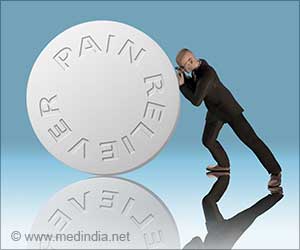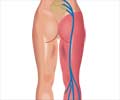Scientists discovered a brain pathway that activates pain relief through expectation, opening doors for new pain treatments.
- Researchers discovered a brain pathway linking the cingulate cortex to the cerebellum, which activates during placebo-induced pain relief
- The study revealed that neurons in the anterior cingulate cortex communicate with the pontine nucleus and cerebellum to modulate pain expectations
- This discovery opens possibilities for new pain treatments through drug repurposing or neurostimulation targeting this novel neural pathway
Neural circuit basis of placebo pain relief
Go to source).
The researchers, led by Greg Scherrer, Pharm.D., Ph.D., associate professor in the UNC Department of Cell Biology and Physiology, the UNC Neuroscience Center, and the UNC Department of Pharmacology, discovered that certain neurons and synapses along this pathway are highly activated when mice expect and experience pain relief, even when no medication is used.
Possibility of Novel Methods to Treat Pain
"That neurons in our cerebral cortex communicate with the pons and cerebellum to adjust pain thresholds based on our expectations is both completely unexpected, given our previous understanding of the pain circuitry, and incredibly exciting," Scherrer told the audience. "Our results open the possibility of activating this pathway through other therapeutic means, such as drugs or neurostimulation methods to treat pain."According to Scherrer and colleagues, their findings give a new paradigm for studying the brain networks that underpin other mind-body interactions and placebo effects besides pain.
What is the Placebo Effect?
When confronted with discomfort, it is natural to want to feel better. As a result, and in tandem with millennia of evolution, our brains can look for ways to make us feel better. It produces compounds that can be measured. Positive thinking, and even prayer, have been shown to help some patients. The placebo effect, or feeling better despite the lack of "real" treatment, has been established as a very genuine phenomenon for decades.In clinical research, the placebo effect is frequently observed in what is known as the "sham" treatment group. That is, people in this group are given a false drug or intervention that is supposed to be harmless; no one in the control group is expected to benefit. Except that the brain is so powerful, and people are so eager to feel better, that some perceive a significant improvement in their symptoms. Some placebo effects are so strong that people believe they received a legitimate treatment intended to help them.
In fact, it is believed that some people in the "actual" therapy group benefit from the placebo effect. This is one of the reasons why clinical research on treatments is so challenging and requires as many volunteers as possible so that scientists can distinguish between the therapy benefit and the sham. One strategy to assist scientists in this endeavor is to first understand what is happening in the brain of someone experiencing the placebo effect.
Understanding Pain Relief Mechanism Down to the Level of Nerve Cells
The authors of the Nature paper recognized that the scientific community’s understanding of the biological underpinnings of pain relief through placebo analgesia - when patients’ positive expectation of pain relief is sufficient to make them feel better - was based on human brain imaging studies that revealed activity in specific brain regions. These imaging investigations lacked the precision required to reveal what was happening in particular brain regions. So Scherrer’s team devised a series of precise, complementary, and time-consuming tests to understand more about what was going on in those locations, down to the level of individual nerve cells.First, the researchers developed an assay in mice that induces the expectation of pain reduction, followed by a very real placebo effect of pain relief. The researchers next employed a variety of experimental procedures to investigate the workings of the anterior cingulate cortex (ACC), which has previously been linked to the pain placebo effect. While mice were experiencing the effect, the scientists used genetic tagging of neurons in the ACC, calcium imaging in neurons of freely behaving mice, single-cell RNA sequencing techniques, electrophysiological recordings, and optogenetics, which is the use of light and fluorescent-tagged genes to manipulate cells.
These trials allowed them to examine and investigate the detailed neurobiology of the placebo effect, down to the brain circuits, neurons, and synapses that run throughout the brain.
Pontine Nucleus: New Brain Area that Plays a Role in Pain Relief
The researchers discovered that when mice expected pain relief, the rostral anterior cingulate cortex neurons sent signals to the pontine nucleus, which had no previously documented role in pain or relief. And they discovered that the expectation of pain relief increased signals along this channel."There is an extraordinary abundance of opioid receptors here, supporting a role in pain modulation," Scherrer indicated. "We discovered that inhibiting activity in this pathway disrupted placebo analgesia and decreased pain thresholds. And then, in the absence of placebo conditioning, activating this route resulted in pain relief.
Finally, the researchers discovered that Purkinje cells, a different class of big branch-like cells in the cerebellum, displayed activity patterns comparable to those of ACC neurons during pain relief expectations. Scherrer and first author Chong Chen, MD, PhD, a postdoctoral research associate in the Scherrer group, said the study provides cellular-level evidence for the cerebellum’s function in cognitive pain regulation.
"We all know we need better ways to treat chronic pain, particularly treatments without harmful side effects and addictive properties," Scherrer told reporters. "We think our findings open the door to targeting this novel neural pain pathway to treat people in a different but potentially more effective way."
Reference:
- Neural circuit basis of placebo pain relief - (https://www.nature.com/articles/s41586-024-07816-z)
Source-Medindia














